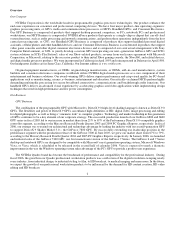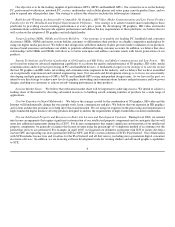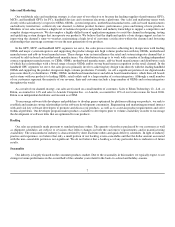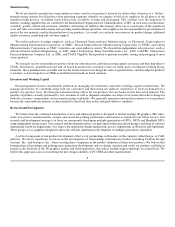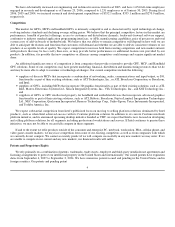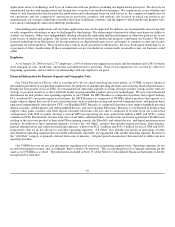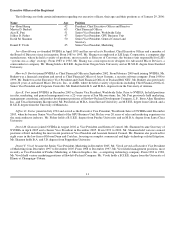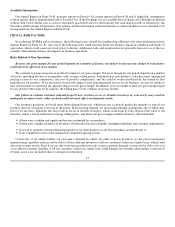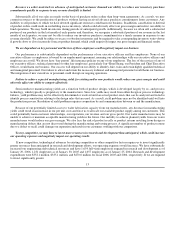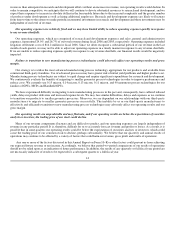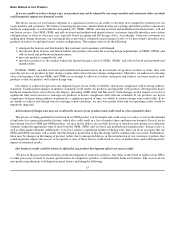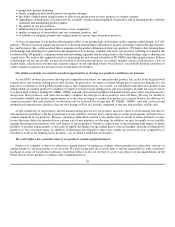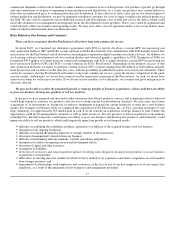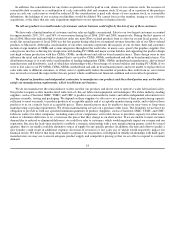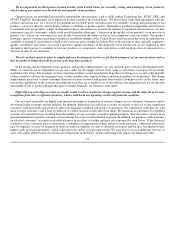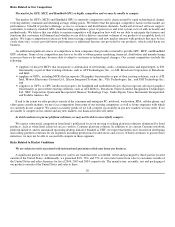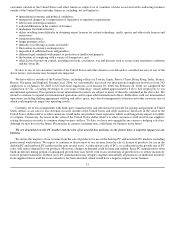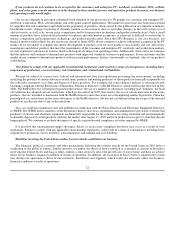NVIDIA 2006 Annual Report Download - page 18
Download and view the complete annual report
Please find page 18 of the 2006 NVIDIA annual report below. You can navigate through the pages in the report by either clicking on the pages listed below, or by using the keyword search tool below to find specific information within the annual report.
Available Information
Our Annual Report on Form 10−K, quarterly reports on Form 10−Q, current reports on Form 8−K and, if applicable, amendments
to those reports filed or furnished pursuant to Section 13(a) of the Exchange Act are available free of charge on or through our Internet
website, http://www.nvidia.com, as soon as reasonably practicable after we electronically file such material with, or furnish it to, the
Securities and Exchange Commission. Our website and the information contained therein as connected thereto is not intended to be
incorporated into the Annual Report on Form 10−K.
ITEM 1A. RISK FACTORS
In evaluating NVIDIA and our business, the following factors should be considered in addition to the other information in this
Annual Report on Form 10−K. Any one of the following risks could seriously harm our business, financial condition and results of
operations, which could cause our stock price to decline. Additional risks and uncertainties not presently known to us or that we
currently deem immaterial may also impair our business operations.
Risks Related to Our Operations
Because our gross margin for any period depends on a number of factors, our failure to forecast any change in such factors
could adversely affect our gross margin.
We continue to pursue measures in an effort to improve our gross margin. Our gross margin for any period depends on a number
of factors, including the mix of our products sold, average selling prices, introduction of new products, sales discounts, unexpected
pricing actions by our competitors, the cost of product components, and the yield of wafers produced by the foundries that
manufacture our products. If we incorrectly forecast the impact of the aforementioned factors on our business, we may be unable to
take action in time to counteract any negative impact on our gross margin. In addition, if we are unable to meet our gross margin target
for any period or the target set by analysts, the trading price of our common stock may decline.
Our failure to estimate customer demand properly may result in excess or obsolete inventory or, conversely, may result in
inadequate inventory levels, either of which could adversely affect our financial results.
Our inventory purchases are based upon future demand forecasts, which may not accurately predict the quantity or type of our
products that our customers will want in the future. In forecasting demand, we must make multiple assumptions any of which may
prove to be incorrect. Situations that may result in excess or obsolete inventory, which could result in write−downs of the value of our
inventory and/or a forced reduction in average selling prices, and where our gross margin could be adversely affected include:
• if there were a sudden and significant decrease in demand for our products;
• if there were a higher incidence of inventory obsolescence because of rapidly changing technology and customer requirements;
• if we fail to estimate customer demand properly for our older products as our newer products are introduced; or
• if our competition were to take unexpected competitive pricing actions.
Conversely, if we underestimate our customers' demand for either our older or newer products, we may have inadequate
manufacturing capability and may not be able to obtain sufficient inventory to fill our customers' orders on a timely basis, which could
affect our revenue results. Even if we are able to increase production levels to meet customer demand, we may not be able to do so in
a cost effective manner. Inability to fill our customers' orders on a timely basis could damage our customer relationships, result in lost
revenue, cause a loss in market share or damage our reputation.
12


